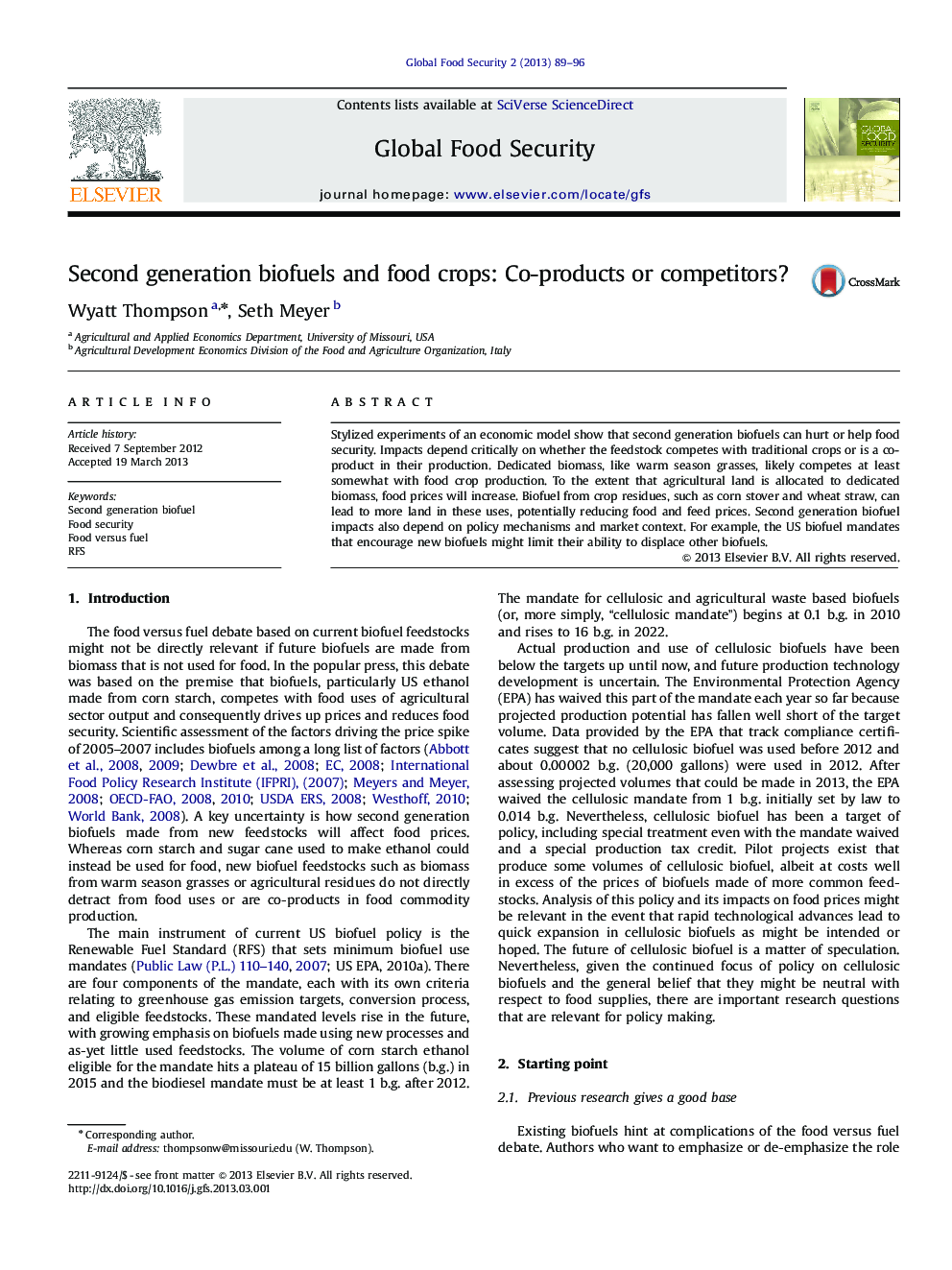| کد مقاله | کد نشریه | سال انتشار | مقاله انگلیسی | نسخه تمام متن |
|---|---|---|---|---|
| 1047605 | 945296 | 2013 | 8 صفحه PDF | دانلود رایگان |
• Stylized experiments of second generation biofuels show that food price effects vary by feedstock.
• Dedicated biomass that competes at least somewhat with land has at least some positive price impact.
• Wheat straw biofuel leads to more wheat area, with lower yield, and somewhat lower food prices.
• Corn stover biofuel encourages coarse grain production, lowering animal feed and food prices.
• Biofuel market impacts also affect food prices, but might be constrained by the biofuel use mandates.
Stylized experiments of an economic model show that second generation biofuels can hurt or help food security. Impacts depend critically on whether the feedstock competes with traditional crops or is a co-product in their production. Dedicated biomass, like warm season grasses, likely competes at least somewhat with food crop production. To the extent that agricultural land is allocated to dedicated biomass, food prices will increase. Biofuel from crop residues, such as corn stover and wheat straw, can lead to more land in these uses, potentially reducing food and feed prices. Second generation biofuel impacts also depend on policy mechanisms and market context. For example, the US biofuel mandates that encourage new biofuels might limit their ability to displace other biofuels.
Journal: Global Food Security - Volume 2, Issue 2, July 2013, Pages 89–96
